Our time in Murchison National Park is over and today we have a long drive to Kibale National Park.
This post contains unpaid advertising. This trip was self-paid for and this report only reflects my opinion. It also contains affiliate links. If you buy something there, you don’t pay more, but I get a small commission that helps to continue my blog.
Southwards
As soon as we are on the newly built road through the Murchison National Park, we make good progress. We go back to the south of Uganda,where there arestill a number of larger and smaller national parks. Unfortunately, there is not enough time for all of them but tonight we will arrive in Kibale National Park. Here we ´ll start the chimpanzee tracking tomorrow.
We drive through Hoima, a larger city with a lot of traffic towards Fort Portal. We pass through many small villages, which often still consist of houses in the traditional architectural style. The landscape is getting greener and greener and is very hilly.
Agriculture
The predominantly peasant population in Uganda cultivates small private fields with corn, various vegetables and also with bananas, which can be bought everywhere. Sometimes people bring the bananas with bicycles, mopeds or even on their backs to collection points, where they are bought by wholesalers.
Everywhere on the roadside we see small stalls where the farmers sell their products directly. Beautifully stacked tomatopyramids lie next to mangoes, pineapples, bananas and many other field and tree fruits that we cannot identify because we have never seen them before.
What else is grown
Again, and again we also see large plantations. Above all, it is bananas, but also huge tea plantations that spread almost to the horizon. Here, several times per year, the young shoots of the plants are trimmed, brought to the collection stations in large bags and dried. Unfortunately, I don’t know the exact process.
In one of the places, we drive through we stop and look at the drying process of the coffee bean. They, too, are brought in sacks by the pickers and then dried on huge plastic tarpaulins and freed from their hard shell before they can then be roasted. Unroasted, they look almost like peanut halves.
Crater Safari Lodge
In the late afternoon we reach the Crater Safari Lodge, where we will stay again for two nights. After check-in, of course with the obligatory fever measurement and disinfection, we can move into our lodge directly at the crater rim. On the large, covered veranda a comfortable sofa and a colorful hammock are waiting for us. The lake is deep below us, if you like, you can go down many steps and swim there. We prefer the pool because it looks a bit like rain or thunderstorms.
Inside we first see the lovingly decorated bed and the cozy sitting area. Through the dressing room it goes into the large bathroom, also with a view of the crater.
The Lodge
The garden is beautifully landscaped, with many flowers, trees, and breeds on which hollywood swings stand. Further back are the buildings that house the normal rooms. They are a little set back,but you can still see the lake. The rooms are also nicely decorated, but not quite as big, but of course a little cheaper.
We take the meal in the restaurant, which also includes a bar. Everything is lovingly and deliciously prepared, the service very attentive and very friendly. Here it can be endured well!
Kibale National Park
From the lodge it is not far to Kanyachu Gate of Kibale Forest. The Kibale National Park is almost 800 km² in size and has a very temperate climate due to its location between 960 and 1590 meters above sea level. There is a lot of rainfall, but during the day it is never really hot, at night it can get cooler.
Here you will find 13 primate species, many other mammals, even the African Forest Elephant, almost 400 bird species, but above all a population of approx. 1450 of the endangered long-haired chimpanzees. We want to visit one of these groups today.
At the ranger station
We ordered and paid for our chimpanzee permits months ago when booking the trip. Since only very few tourists are allowed to visit the chimpanzees per day, a very early reservation is urgently needed.
We are divided into groups of 6 and each group starts with a ranger. There are already rangers in the forest looking at where the chimpanzees are. Of course, we all have to wear masks so as not to infect the animals with human diseases and we should always keep a distance of 10 meters.
It doesn’t take long for our ranger to get a call to where to take us. The Kibale National Park is quite flat and easy to walk through here, as little undergrowth grows. Nevertheless, you should be good on foot and wear sturdy shoes, as long-sleeved clothing as possible and long trousers, because the insects like us humans quite a lot…
Our ranger explains to us that chimpanzees usually like to be on the ground. At the moment, however, they like to stay on the trees, because of the very long rainy season, the trees with the fruits could not yet bloom properly, or plant fruits. Therefore, the chimpanzees now have to partially starve and are less active than normal. In order to save energy, they remain as high up as possible in the treetops, because there are still some fruits most likely to be found.
The chimpanzees
We hear them from afar and then we are almost under the tree, where there are at least 6 chimpanzees. We watch them for quite a while and then move on, hoping to meet another group that can be seen a little closer. Soon we have reached another group who are a bit more active and sit a little further down in the tree. They observe us just as we observe them. However, we do not seem to be very interesting for them, because they continue to devote themselves to the search for food and move slowly through the branches.
They talk with loud shouts. Two seem to have a certain conflict with each other, because the calls seem to become more aggressive and sticks fly again and again. We must be careful not to be hit. Chimps sometimes go on a kind of hunt. They hunt for other mammals, kill them and eat them, as they are not strictly vegetarians, like their “brothers”, the Gorillas, that we are going go see in a couple of days.
Another chimpanzee is braver and accommodates us a little. Unfortunately, the light in the forest is so bad, of course we are not allowed to use flashlight, that most of the photos are too dark and I prefer to focus on the apes. It is great to be able to experience them in the wild, because many no longer exist and their habitats are getting smaller and smaller as humans invade their territories.
Quickly the one hour granted to us is over and we go back. Since it is just starting to rain heavily, we are not so sad about it. We leave Kibale National Park after passing the ranger station again and getting our certificates. (Unfortunately we forgot about them with our guide in the car and they are still in Uganda.)
In Bigodi
We spend the afternoon in the village of Bigodi, not far from Kibale National Park.
Here the local population is helped by showing tourists how daily life takes place in such a village.
Everything with bananas
First, our local guide takes us to a family that grows bananas, among other things. This variety is harvested raw and stacked in a kind of small tower. Then a fire is lit underneath, which smokes the bananas and allows them to ripen at the same time.
An aromatic juice is pressed from a part of the bananas, which becomes very clear after sieving and with the stretching through water. Of course, we can taste, and it is really delicious!
The small children of the farmer are curious, and I ask if I can give them some sweets. They rejoice and immediately leave to show their mother what they just got.
Then we get explained how to prepare gin from these bananas. This is a very laborious undertaking, with a lot of muscle power juice is wrested from the bananas again, which has to ferment and then becomes gin through a simple distillery, made from an old metal barrel. The whole thing takes days and we now get the result of the last distillation to taste. Hui, he has it all! A tiny sip is enough for me.
How do I make coffee?
A lady from the village grows coffee plants and now shows us how to make a tasty coffee from the red coffee berries.
The coffee berries dry in the sun over many days. When the shell has become hard and black, the berries are now dry enough and can be freed from the hard shells in a mortar. The mortar looks like a butter barrel, and it takes a lot of strength to free the beans from the shell with the mortar.
The wooden container is now emptied, and the bowl-bean mixture is sieved until only the light beige beans are left. The lady now makes a fire and roasts the beans in a metal pot over it. Always swivel nicely so that they do not burn.
When all are uniformly dark, they come back into the mortar and are mashed until they become coffee powder. Over the fire, water is brought to boil and infused with the powder. So today we get another sample. Hmmm, wonderful! Very strong, but still mild. My first coffee today!
Then we go on.
Visiting the shaman
Also in Bigodi there is a shaman whom the villagers visit when it comes to illnesses or other physical problems, because there is no doctor around. The already quite old man knows a lot about the healing powers of the plants that can be found here. People visit him and receive not only a remedy, but also the appropriate mental support, possibly also a “spell”.
Here we do not get a taste, because we are doing well!
What can be made from banana leaves?
We learn this in another part of the sprawling village. Some ladies have teamed up here and make beautifully patterned cans and bowls from banana leaves. These are torn into narrow strips and dyed after drying with natural colors, for example by petals or plants. They explain the process to us and then introduce us to a few songs that are sung while working.
On the way back we pass the sports field of the village, where a football match is being played. The whole village seems to be gathered here and cheer for their own team.
That was an eventful and very interesting day!
Let’s see what tomorrow brings us as we drive from Kibale National Park to Queen Elizabeth National Park.
Are you also curious to see what happens next? Then subscribe quickly to my newsletter and you will receive a short hint immediately after a new blog post appears.
On my Instagram, Facebook and Pinterest pages I am also happy about your subscription and of course about every “like” and every comment. Let’s go!
Follow me!
You have missed the first days of my trip through Uganda, then go this way!
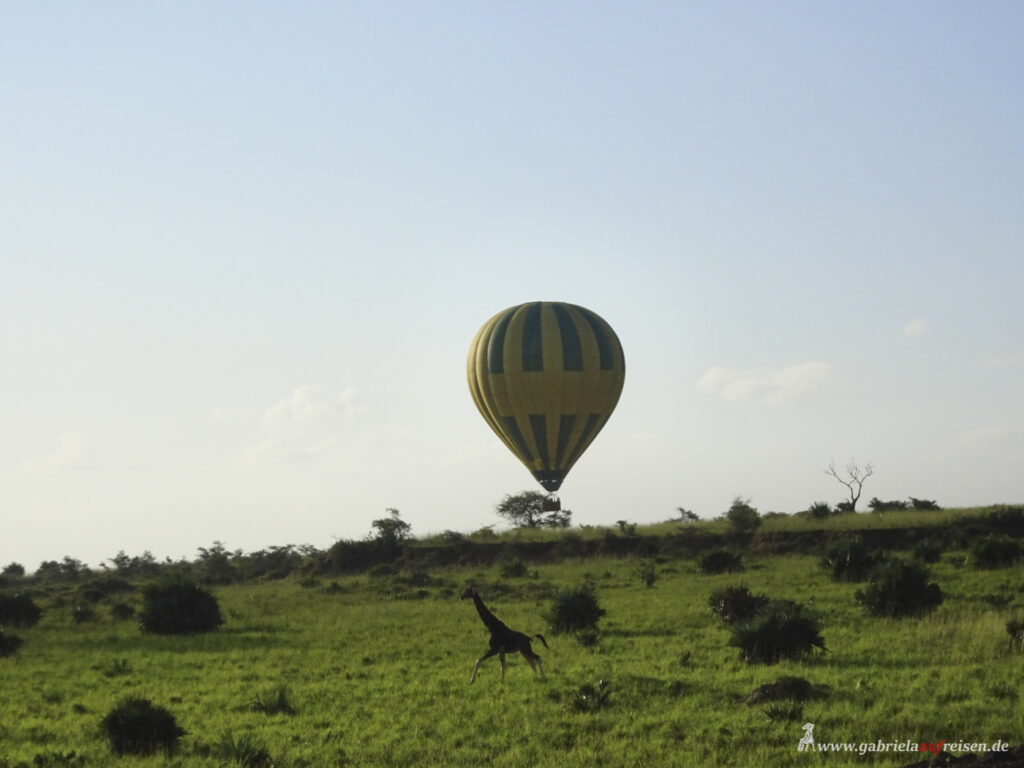

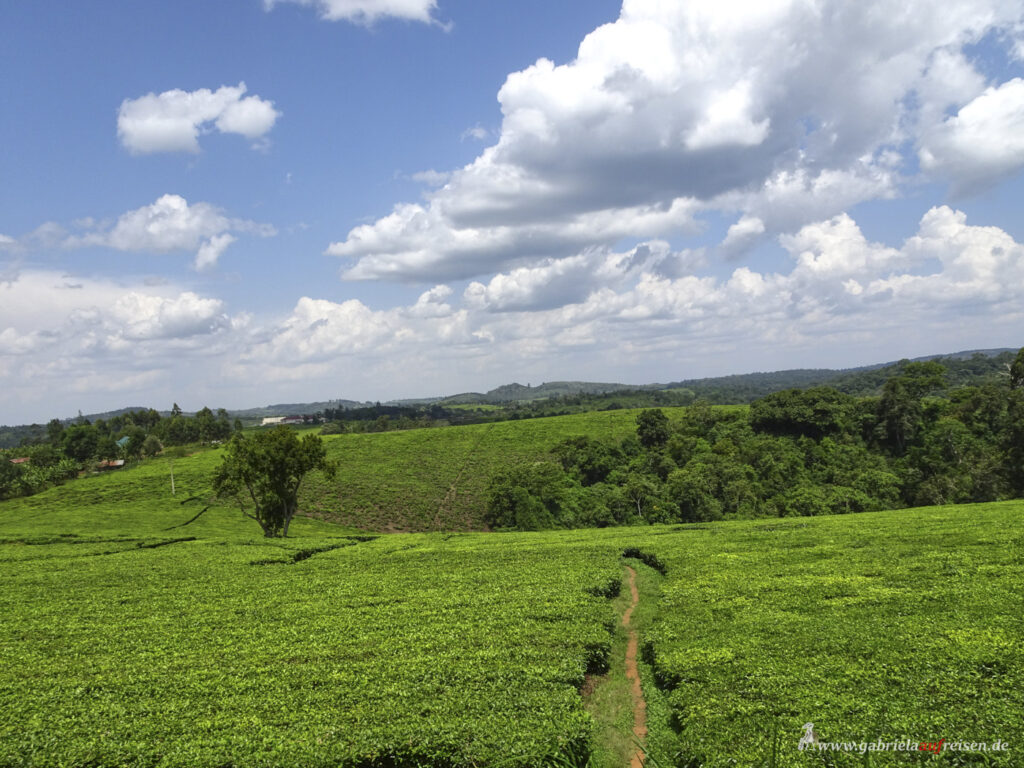
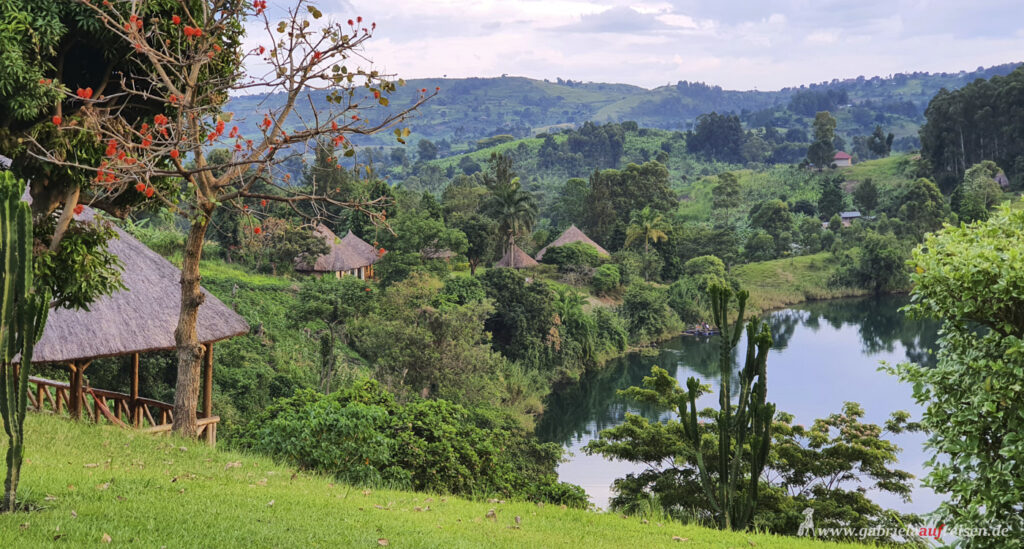
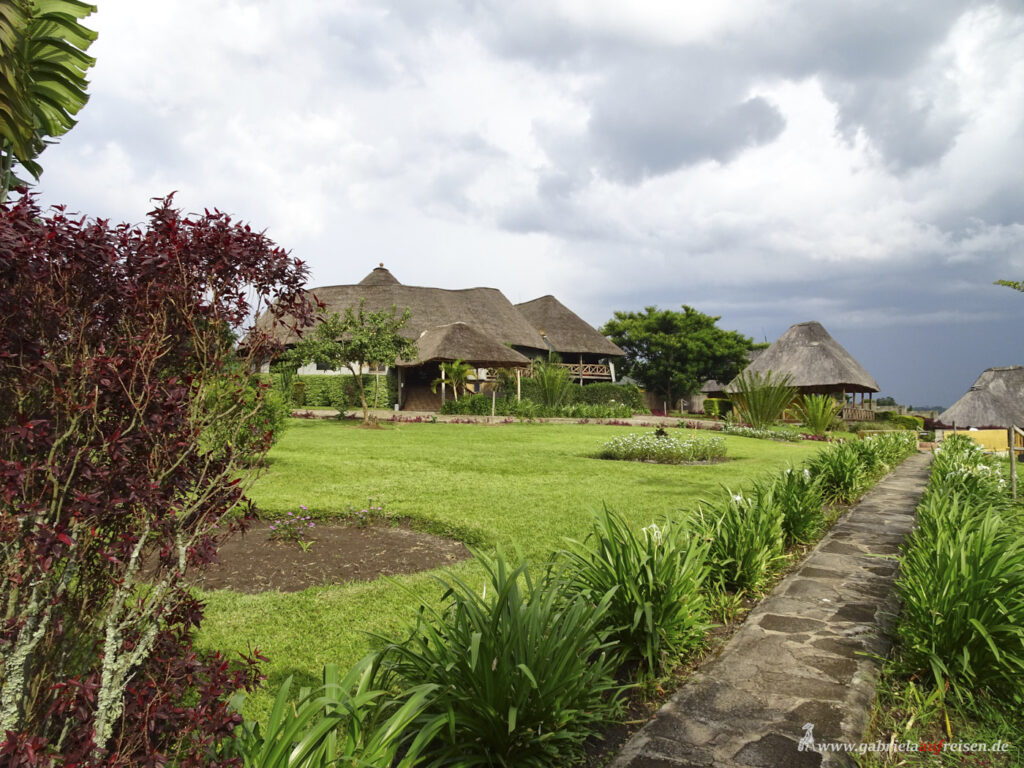
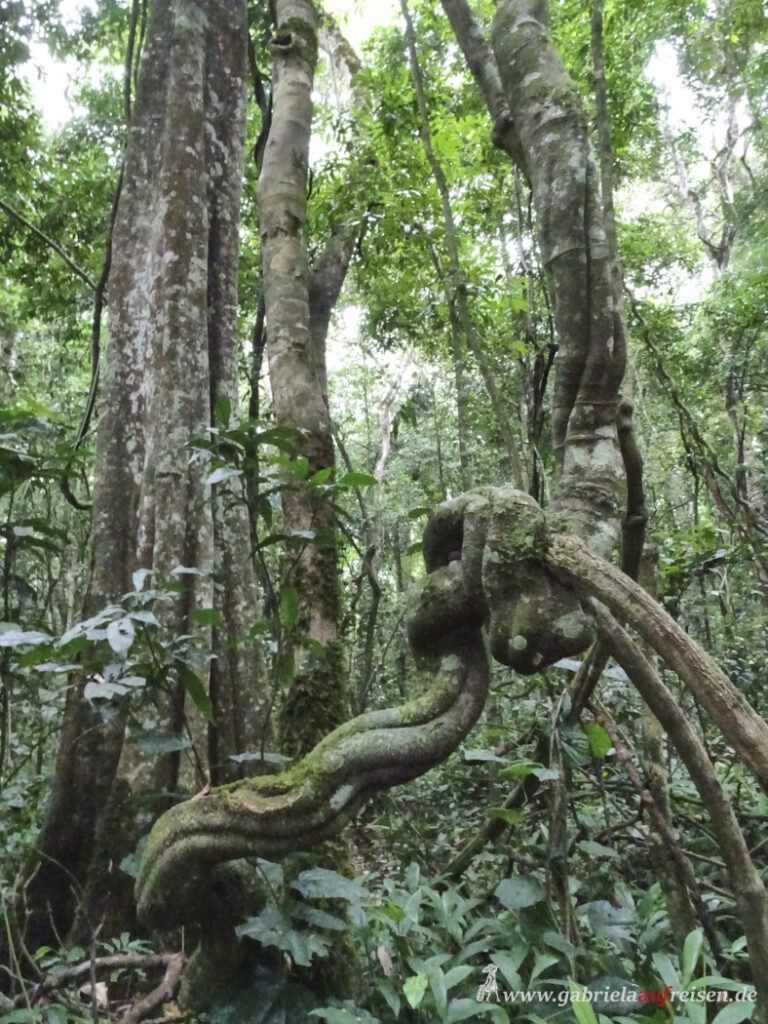
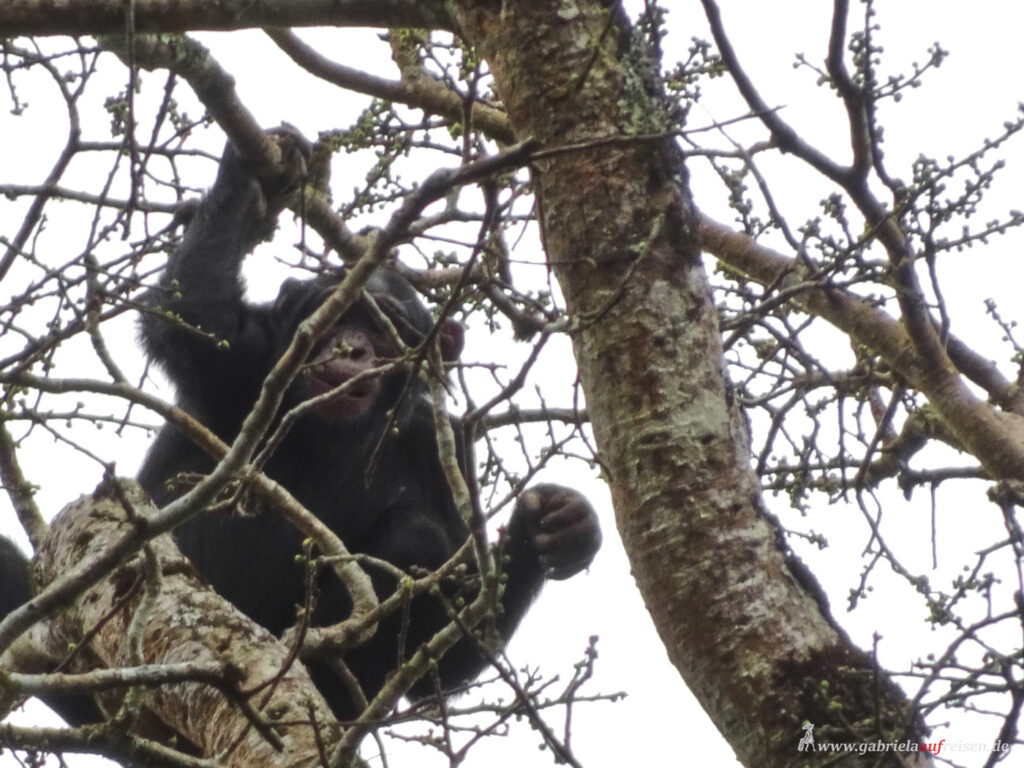
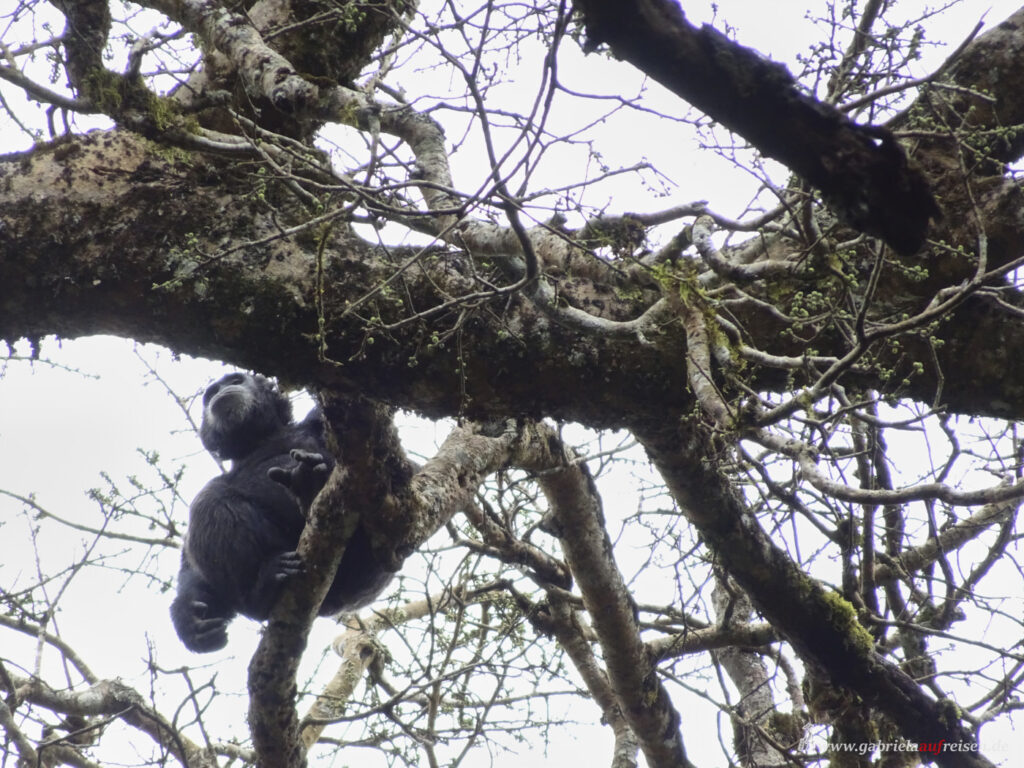
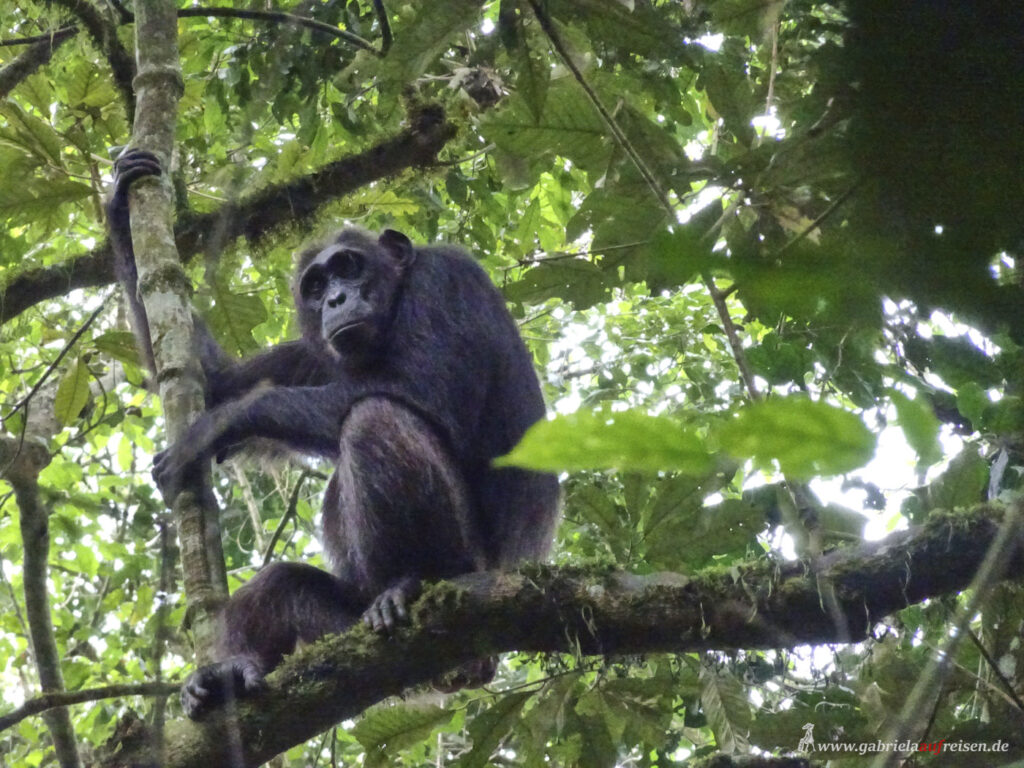
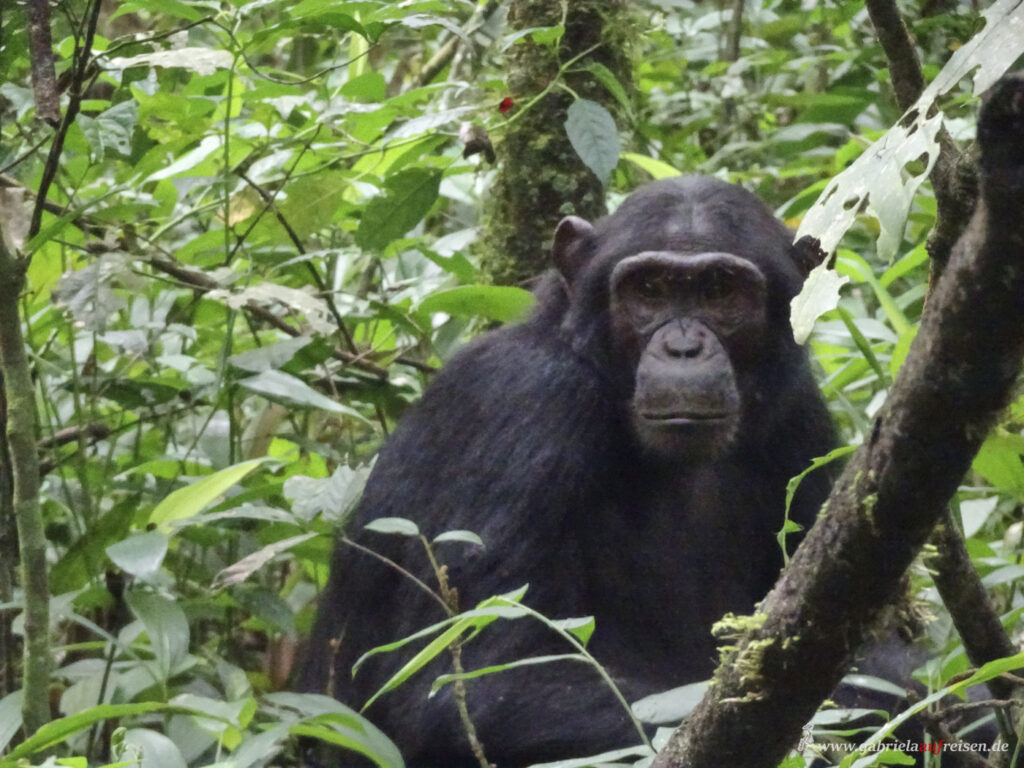
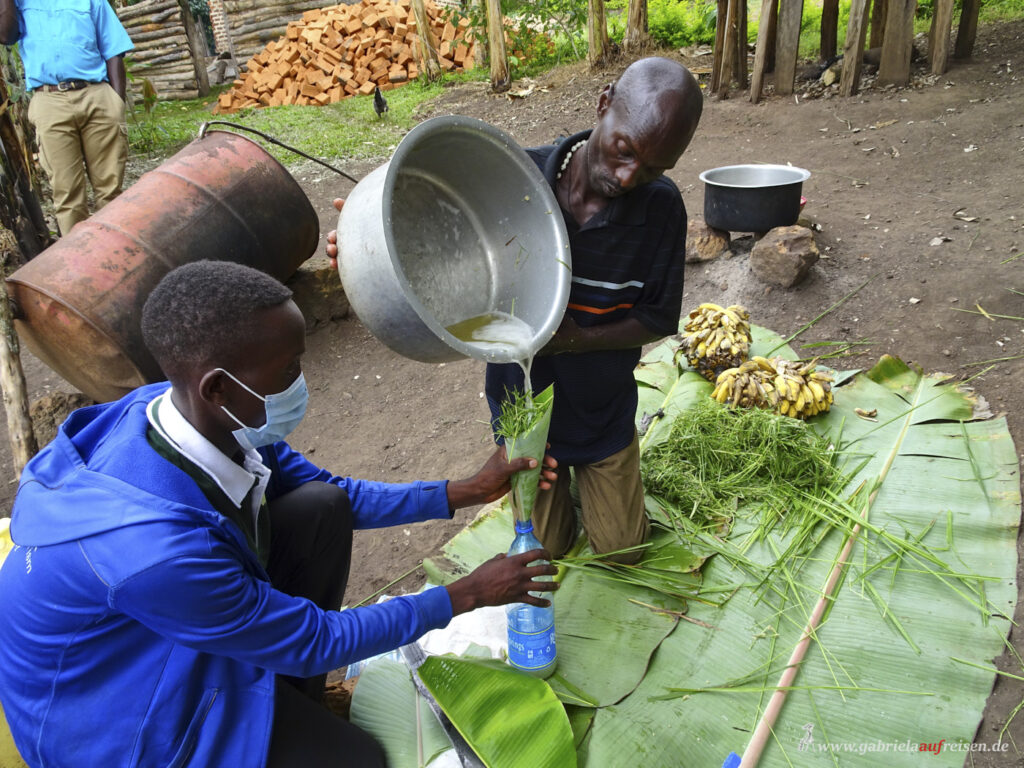
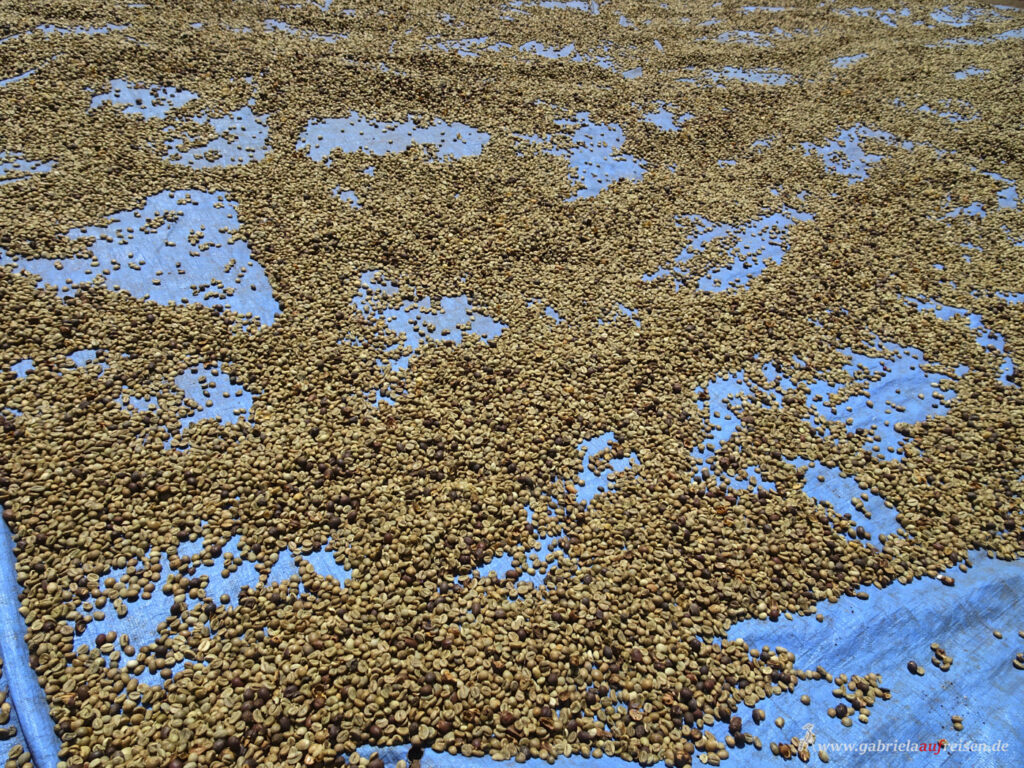
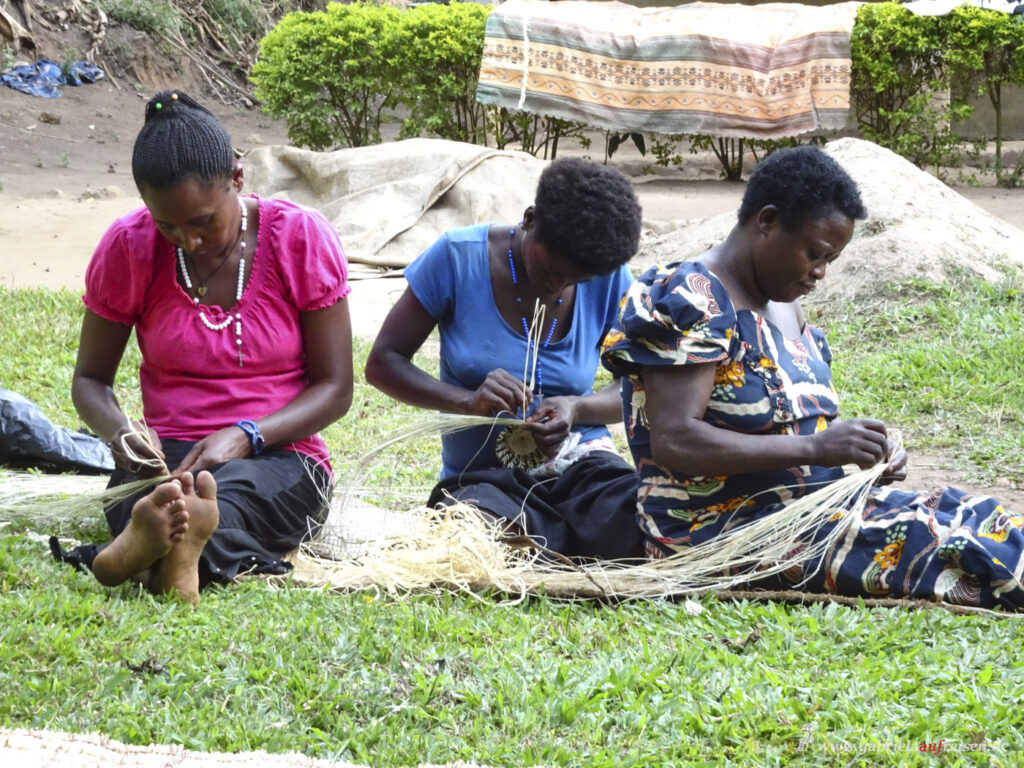
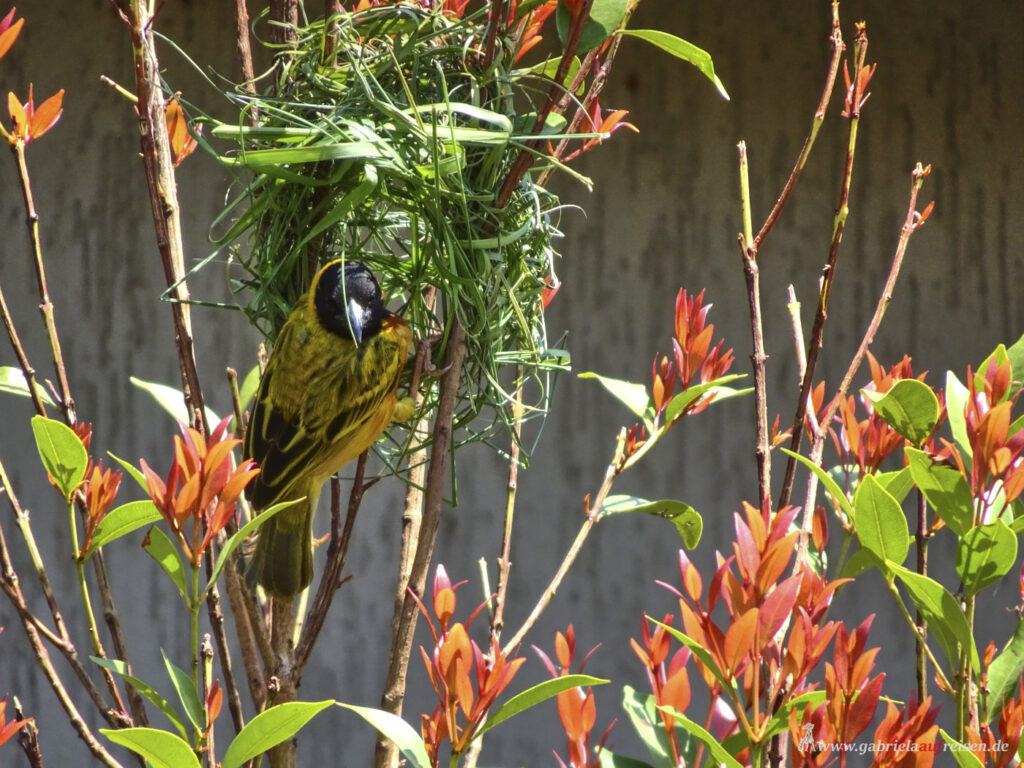
[…] What did we do the previous days? You´ll find it here! […]